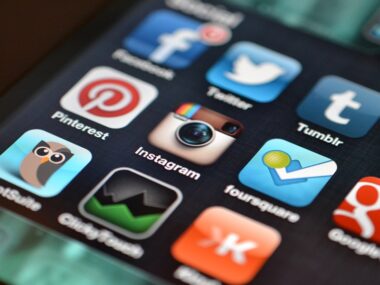Every founder has been there — juggling business goals, refining the MVP, chasing funding, and trying to get a product to market before the competition. In this chaos, it’s easy to push design off the roadmap, assuming it’s something that comes after development. But that’s a mistake. The best startup success stories didn’t treat design as decoration — they made it foundational.
Bringing a product designer into the process early allows your product vision to be shaped not only by engineering constraints but by user needs and design logic. Design affects how users interact with your solution, how quickly they find value, and how confident investors feel in your product’s maturity. So, before you write your first line of code, consider why you should hire product designer support to steer your decisions — not just your screens.
Strategic Design Decisions That Shape Long-Term Product Success
Product Designers Help Shape the Right Product — Not Just a Working One
Startups often rush into development assuming their idea is fully formed. But an MVP isn’t just about function — it’s about proving people want to use what you’ve built. A skilled product designer can identify the friction points before they become features nobody uses.
Rather than waiting for post-launch feedback, product designers conduct early usability testing, define user personas, and structure intuitive user journeys. This saves time, development resources, and most importantly, reduces the risk of launching something that needs to be rebuilt from scratch.
Tech companies that embed design thinking from the start often report higher user retention and satisfaction. Airbnb’s founders credit early design focus for their ability to differentiate — even before their product had complex engineering behind it. That’s how powerful design-led thinking can be.
Better Design Equals Better Fundraising
Investors don’t just look at traction — they look at promise. And nothing communicates vision and clarity like a polished, thoughtfully designed product. When you hire product designers early, you are not just improving UX — you are increasing your odds of winning investor confidence.
Design communicates maturity. A clean, functional interface shows that your startup understands its users and knows how to deliver value. This gives your pitch decks, demos, and investor trials a competitive edge.
In fact, according to a study by the Design Management Institute, design-led companies outperform the S&P 500 by 219%. While that includes big players like Apple and IBM, the same principles apply to startups. Design tells a story — and when you’re early-stage, every story counts.
Design Reduces Development Costs Later
Every change made in design costs pennies. Every change made after development? Dollars. One of the biggest misconceptions among startups is that speed equals skipping steps. But skipping proper design planning leads to technical debt and costly rework.
A product designer helps define wireframes, flows, and interactions before engineering starts. This gives developers clear guidance, reducing ambiguity and misalignment. It also shortens QA cycles and prevents the need for last-minute pivots caused by user confusion or feature overload.
Think of design as a blueprint — would you build a house without one? Tech companies that invest in thoughtful design processes early on often avoid rushed revisions, saving time and money across sprints.
Product Designers Help Balance User Needs with Business Goals
It’s easy to fall in love with your features. But building a startup isn’t about adding every idea — it’s about solving a problem. Product designers act as the voice of the user in planning meetings. They ask questions that shift priorities: “Is this valuable?” “Will users understand it?” “How fast can they reach their goal?”
At the same time, they understand business goals. A strong product designer won’t design for aesthetics alone — they’ll push to streamline onboarding, increase conversion, and support retention.
Their role is to bridge user empathy with business impact. When that balance is struck, you don’t just build what you think people want — you build what actually works.
Early Design Helps Attract Better Talent and Customers
Startups compete not just for customers — but for great team members. A well-designed product is a signal that your company values clarity, experience, and user-centric thinking. This matters to top developers, marketers, and even potential co-founders or partners.
For users, design communicates trust. In a split-second, people decide whether a product looks “legit.” Clean design builds credibility — especially when you are not yet a known brand. This can be the difference between someone exploring your app or bouncing after the homepage.
It’s no surprise that tech companies like Stripe, Notion, and Figma saw massive early adoption not just because of performance — but because of superior design. Form, it turns out, can create just as much traction as function.
Where to Find a Product Designer for Hire
Now that it’s clear why early design hires matter, where do you find a product designer for hire? While freelance platforms offer volume, quality can vary widely. Instead, consider designer communities like Dribbble, Behance, or design-focused agencies that specialize in startup work. Referrals from other tech companies can also lead you to designers who understand the fast-paced startup environment.
During the hiring process, look beyond portfolios. Ask how they handle feedback. What research methods do they use? Can they explain the reason behind a design decision? A designer’s value lies not just in what they create — but how they think.
Whether you are hiring part-time, full-time, or on a project basis, clarity of expectations will lead to a better working relationship and smoother handoff to development teams.
Common Mistakes Startups Make by Ignoring Design
Many early-stage founders skip product designers for hire because they believe design is “just visuals.” This leads to design being handled by engineers, marketers, or even founders themselves. The result? Products that are inconsistent, hard to navigate, or simply not aligned with what users want.
Other common missteps include:
- Delaying design until after development
- Copying competitor designs without user validation
- Prioritizing features over flow
- Hiring based on aesthetics, not process
These missteps often cost startups in user drop-off, poor app store reviews, or slow adoption — all of which can derail growth during critical stages. Hiring a product designer early avoids these pitfalls and lays a foundation your team can build on for months or years to come.
Conclusion: Design Is a Strategic Investment, Not a Cosmetic One
If you are still on the fence about whether you should hire product designers during your early development phase, consider this: design shapes perception, experience, and business outcomes. It’s not just about making things look better — it’s about making them work better.
Great design is the difference between a usable product and a loved one. And in a world where users are bombarded with options, love matters. So before you write your next sprint or pitch your MVP, bring a designer into the room. Your users — and your roadmap — will thank you.
Author Bio;
Hi, I’m Colton Harris — an SEO expert with over 7 years of experience and the privilege of leading several international companies. I’m passionate about helping businesses and entrepreneurs enhance their online presence, attract targeted traffic, and convert clicks into loyal customers. I also share valuable insights on business, technology, finance, marketing, and the latest in cryptocurrency — because staying ahead of the curve is what keeps the journey exciting.











